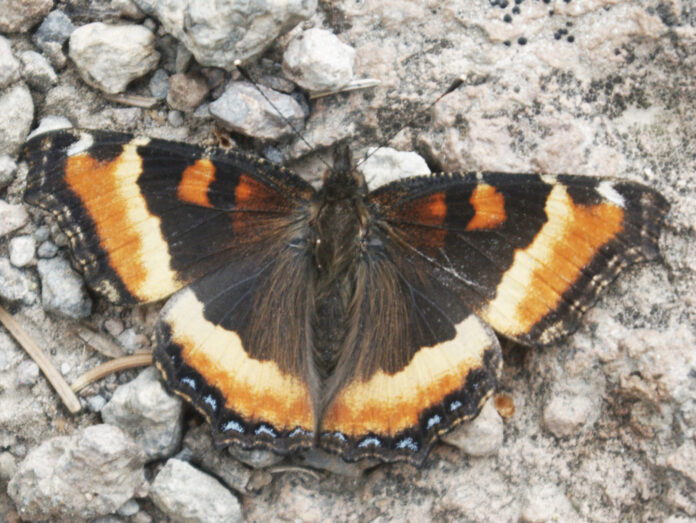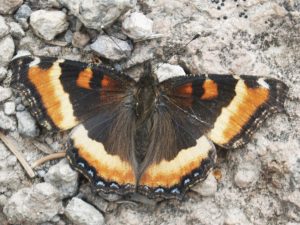
BY HARRY WEEKES

I recently watched Arrival—a movie about aliens who come to Earth, hover in their various craft over a dozen places spread across the planet, and then suffer patiently as the militaries of the world, and the humans in charge of them, decide if they should preemptively attack and destroy the unknown visitors. This is all while the people figure out how to communicate with the extraterrestrials.
The key to the movie turns out to be language, and the power of language to transform how someone thinks. In this case, I was introduced to the very cool hypothesis that being fully fluent in another language enables you to embrace that culture’s values and beliefs or, in the extreme, to actually think like them (the ‘them’ in this case being Heptapods—seven-legged creatures that look like a cross between elephants and giant squid, that speak in resonating baritones, and who write in complex, inky smoke rings).
Naturally, I connected this to butterflies; to the Milbert’s tortoiseshell, specifically. At some point in the late winter/early spring, I see my first butterfly. It is, invariably, one of two kinds—the above-mentioned tortoiseshell or a mourning cloak. This spring, it was the tortoiseshell, a medium-sized butterfly whose wings are mostly warm brown and maroon, with an incredible orange border that looks like flames or glowing coals. If the underwings of these butterflies were described in a J. Crew catalog, they would be called “dark bark,” a camouflage that makes the wings disappear when the butterflies fold them up to hide in the trunks of trees.
Despite the fact that I always see butterflies when there is snow on the ground and when there is still cold in the air, I associate them almost entirely with summer. Butterfly language to me is about warmth, and color, and the fragrance of flowers. It is about being in shorts and barefoot and somehow being outside of time. So, when a Milbert’s tortoiseshell shows up in my garage in April, it is a wonderful relief from dirty ice, from multiple layers of clothing, and from our loooooooong transition into summer.
Thinking like a butterfly is as much about remembering the language as it is about knowing it. And so it was that I looked down and found a dead little butterfly. When butterflies die, they generally fold up their wings, showing only their camouflaged underwings. “Dark bark” clicked in the catalog of my mind, and I carefully carried the insect to where I could sit down and slowly open its wings. And there it was, a rim of bright orange, flecked and speckled exactly how you would think something called a tortoiseshell would be.
And in an instant, I remembered. I remembered a season still unfolding. I remembered that you never, ever see the wind, just those things that tell you it is there. I remembered that in the language of butterflies, my vocabulary is not sentences but mere words.
Perhaps this is why I keep the butterfly on my shelf, right where I can see it every morning, right where it can remind me of all that I don’t know, and where I can try just a little bit each day to get more fluent in butterfly.
Harry Weekes is the founder and head of school at The Sage School in Hailey. This is his 47th year in the Wood River Valley, where he lives with his wife Hilary and their three kids—Georgia, Penelope and Simon—a nice little flock.
